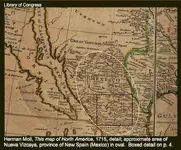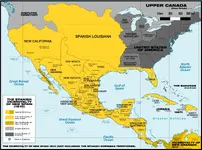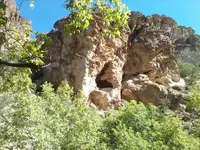Oroblanco
Gold Member
- Joined
- Jan 21, 2005
- Messages
- 7,841
- Reaction score
- 9,876
- Golden Thread
- 0
- Location
- DAKOTA TERRITORY
- Detector(s) used
- Tesoro Lobo Supertraq, (95%) Garrett Scorpion (5%)
Springfield wrote
Thank you Springfield, and actually I agree with your conclusion that it was a mistake; I would propose that the mistake was due to the known connections of Jesuits and mining in AZ, leading to the assumption about Mina de Tierra. However my repeated question, three tries, was not directed at you, as you had already answered my question posted to you. Cactusjumper had posted this comment, after I had asked your opinion about that extract:
So I asked him,
Are you contending that the governor of New Mexico, wrote "Jesuits" in his report, because the Jesuits are "more sexy"? Thanks in advance,
and he replied with,
so I gave it another try and answered HIS question,
Gov George Curry.
Now to answer my question? I asked because the governor's report, had NOTHING to do with any lost treasure or lost mine. Were you suggesting that he wrote Jesuits, because they would be 'more sexy' as it relates to lost treasures?
This got NO response, so I had posted,
I guess I don't get an answer this time.
A side point here but the Jesuits were intriguing in NM, especially in the early part of the 17th century; at least two 'entradas' and an unknown amount of 'string pulling' in high places to try to get the Moqui and their region assigned to their Order and taken away from the Franciscans. I am aware that virtually all records of NM prior to 1680 were lost.
Quinoa wrote
Then we are left wondering WHO did the mining?
Quinoa also wrote
There is clear evidence that it was the Pimas themselves whom showed some mineral deposits (which became mines) to the padres, as in the case of La Esmeralda.
Quinoa also wrote
Interesting speculation, however the record won't support it. The Jesuits, like most of the Orders of priests (and even nuns) became involved in virtually every type of commerce that existed in the colonial period. In many cases, this was well known to the Royal authorities, and special exemptions/permissions were obtained, always with the purpose of generating income to support the missions and colleges run by the Jesuits. The Royal govt was even paying supplementary money to support the padres and missions, which was supposed to be for a set period of time, usually ten years, at the end of which the missions were supposed to be self-supporting; however in most cases the padres managed to keep extending those tax-free exemptions for repeated periods of ten additional years several times over. The Royal authorities were quite willing, even happy to look the other way even though mining was specifically illegal for priests, because these missions were performing a very handy service for the Royal government by keeping the Indians "pacified" - at peace, at which the missionaries were pretty successful. They were not 100% successful, there were a whole string of revolts against them by the Indians of course, but by and large, they helped keep things quiet so the Royal govt let them run mines, mills, sugar refineries, even retail stores and banking.
Strangely, while the Jesuits and their defenders do not deny that they (Jesuits) WERE involved in every other kind of commercial activity from sugar plantations to the slave trade (some do deny this ugly part as well) they DO deny any involvement in mining, nor the amassing of treasure which would certainly have resulted from their numerous business operations. Most usually, the personal vow of poverty taken by Jesuits is pointed to as "proof" that they did not amass treasure, which vow has nothing to do with it as ALL of the business concerns were always in the names of the colleges, the missions, the Order etc and NOT in the personal names of priests. The Order, nor any of the colleges and missions, had NO vow of poverty whatsoever.
I would suggest to anyone interested, to read through this thread from the beginning, as we have covered pretty much all of this before.
Good luck and good hunting, I guess that Joe has forgot and I am not going to keep trying to get an explanation for his earlier remark. I can see that it was another offhand attempt to ridicule the idea of Jesuits mining.
Oroblanco
It had to be a mistake. <snip>
Thank you Springfield, and actually I agree with your conclusion that it was a mistake; I would propose that the mistake was due to the known connections of Jesuits and mining in AZ, leading to the assumption about Mina de Tierra. However my repeated question, three tries, was not directed at you, as you had already answered my question posted to you. Cactusjumper had posted this comment, after I had asked your opinion about that extract:
Roy
Let's face it.....When it comes to treasure hunting stories, the Jesuits are just way more sexy than the Franciscans.
So I asked him,
Are you contending that the governor of New Mexico, wrote "Jesuits" in his report, because the Jesuits are "more sexy"? Thanks in advance,
and he replied with,
Hi Roy,
Which governor are you referring to?
so I gave it another try and answered HIS question,
Gov George Curry.
Now to answer my question? I asked because the governor's report, had NOTHING to do with any lost treasure or lost mine. Were you suggesting that he wrote Jesuits, because they would be 'more sexy' as it relates to lost treasures?
This got NO response, so I had posted,
I guess I don't get an answer this time.
A side point here but the Jesuits were intriguing in NM, especially in the early part of the 17th century; at least two 'entradas' and an unknown amount of 'string pulling' in high places to try to get the Moqui and their region assigned to their Order and taken away from the Franciscans. I am aware that virtually all records of NM prior to 1680 were lost.
Quinoa wrote
Maybe the stuff was already mined and the Jesuits didn't need to mine anything.
Then we are left wondering WHO did the mining?
Quinoa also wrote
Maybe the Native Americans lead them to some of it.
There is clear evidence that it was the Pimas themselves whom showed some mineral deposits (which became mines) to the padres, as in the case of La Esmeralda.
Quinoa also wrote
Maybe all they had to do was re-hide it or cover it up and re-mark it in some holy way agreeing with the bible... After all, they weren't really miners. They were preachers of Christianity. And you aren't supposed to lust for or love the things that are in this world (such as gold and silver). Maybe that was something which they thought was better to keep from humanity if you want people to serve the Lord. (from 1 John 2 :15-17)
Big "maybe's" huh?
Interesting speculation, however the record won't support it. The Jesuits, like most of the Orders of priests (and even nuns) became involved in virtually every type of commerce that existed in the colonial period. In many cases, this was well known to the Royal authorities, and special exemptions/permissions were obtained, always with the purpose of generating income to support the missions and colleges run by the Jesuits. The Royal govt was even paying supplementary money to support the padres and missions, which was supposed to be for a set period of time, usually ten years, at the end of which the missions were supposed to be self-supporting; however in most cases the padres managed to keep extending those tax-free exemptions for repeated periods of ten additional years several times over. The Royal authorities were quite willing, even happy to look the other way even though mining was specifically illegal for priests, because these missions were performing a very handy service for the Royal government by keeping the Indians "pacified" - at peace, at which the missionaries were pretty successful. They were not 100% successful, there were a whole string of revolts against them by the Indians of course, but by and large, they helped keep things quiet so the Royal govt let them run mines, mills, sugar refineries, even retail stores and banking.
Strangely, while the Jesuits and their defenders do not deny that they (Jesuits) WERE involved in every other kind of commercial activity from sugar plantations to the slave trade (some do deny this ugly part as well) they DO deny any involvement in mining, nor the amassing of treasure which would certainly have resulted from their numerous business operations. Most usually, the personal vow of poverty taken by Jesuits is pointed to as "proof" that they did not amass treasure, which vow has nothing to do with it as ALL of the business concerns were always in the names of the colleges, the missions, the Order etc and NOT in the personal names of priests. The Order, nor any of the colleges and missions, had NO vow of poverty whatsoever.
I would suggest to anyone interested, to read through this thread from the beginning, as we have covered pretty much all of this before.
Good luck and good hunting, I guess that Joe has forgot and I am not going to keep trying to get an explanation for his earlier remark. I can see that it was another offhand attempt to ridicule the idea of Jesuits mining.
Oroblanco








